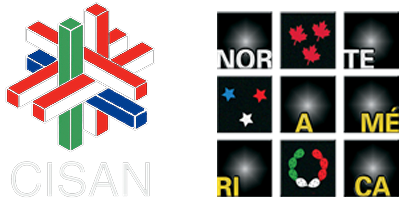Abstract
The objective of this work is to establish the relationship between hydrocarbon production and extraction activities in northeast Mexico, including the Burgos Basin and the states of Tamaulipas, Nuevo León, and Coahuila, and the crime rate in these municipalities. Utilizing municipal-level data from 2020, sourced from official sources, a quantitative and cross-sectional methodology is employed in a descriptive study with correlational and spatial analyses. Municipalities with active or inactive hydrocarbon extraction wells were included, representing 73 of the 132 municipalities in the northeastern states. Although the study recognizes inherent limitations due to the collected data volume, which does not allow for categorical affirmation of a causal relationship, it does permit the observation of a trend confirming the correlation between both variables. This opens the door to a more detailed exploration of the effect of oil exploration on crime behavior, considering it as an additional factor that could potentially increase it.
References
Anselin, L. (1995) ‘Local indicators of spatial association—LISA’, Geographical Analysis, 27(2), pp. 93–115. Available at: https://doi.org/10.1111/j.1538-4632.1995.tb00338.x.
Balogun, W.A. (2021) ‘Why has the “black” market in the Gulf of Guinea endured?’, Australian Journal of Maritime & Ocean Affairs, pp. 1–25. Available at: https://doi.org/10.1080/18366503.2021.1876311.
Becker, G.S. (1968) ‘Crime and punishment: An economic approach’, in Becker, G.S. and Landes, W.M. (eds.) The economic dimensions of crime. London: Palgrave Macmillan, pp. 13–68.
Bushway, S.D. (2011) ‘Labor markets and crime’, in Wilson, J.Q. and Petersilia, J.Q. (eds.) Crime and public policy. Oxford: Oxford University Press.
Chinwokwu, E.C. and Michael, C.E. (2019) ‘Militancy and violence as a catalyst to kidnapping in Nigeria’, International Journal of Police Science & Management, 21(1), pp. 17–35. Available at: https://doi.org/10.1177/1461355719832619.
Correa-Cabrera, G. (2013) ‘Security, migration, and the economy in the Texas–Tamaulipas border region: The “real” effects of Mexico’s drug war’, Politics & Policy, 41(1), pp. 65–82. Available at: https://doi.org/10.1111/polp.12005.
Correa-Cabrera, G. (2015) ‘Desigualdades y flujos globales en la frontera noreste de México: Los efectos de la migración, el comercio, energéticos y crimen organizado transnacional’, Canadian Journal of Latin American and Caribbean Studies, 40(3), pp. 326–350. Available at: https://doi.org/10.1080/08263663.2015.1074853.
Correa-Cabrera, G. (2018) Mexican security diagnosis and a proposal to eradicate violence. Washington, D.C.
Dempsey, H. and Raval, A. (2019) ‘National Trust to divest from all fossil fuel investment’, Financial Times, July.
Detotto, C. and Otranto, E. (2010) ‘Does crime affect economic growth?’, Kyklos, 63(3), pp. 330–345. Available at: https://doi.org/10.1111/j.1467-6435.2010.00477.x.
Freedman, M. and Owens, E.G. (2016) ‘Your friends and neighbors: Localized economic development and criminal activity’, The Review of Economics and Statistics, 98(2), pp. 233–253. Available at: https://doi.org/10.1162/REST_a_00484.
García Rivera, E. (2015) “Desarrollo de la competitividad en los municipios hidrocarburíferos del noreste de Tamaulipas”, in Roux, R. and Flores Torres, O. (eds.) Los hidrocarburos en el noreste de México: Una mirada multidisciplinaria. Universidad Autónoma de Tamaulipas, pp. 154-179.
Gould, E.D., Weinberg, B.A. and Mustard, D.B. (2002) ‘Crime rates and local labor market opportunities in the United States: 1979–1997’, The Review of Economics and Statistics, 84(1), pp. 45–61. Available at: https://doi.org/10.1162/003465302317331919.
Grunstein, M. (2014) Coordinated regulatory agencies: New governance for Mexico’s energy sector.
Grunstein, M. (2017) Coordination of the regulators of the hydrocarbon sector: Is it optimal for the rule of law?
Haahr, K. (2015) Addressing the concerns of the oil industry: Security challenges in northeastern Mexico and government responses. Washington, D.C.
Haggerty, J. et al. (2014) ‘Long-term effects of income specialization in oil and gas extraction: The U.S. West, 1980–2011’, Energy Economics, 45, pp. 186–195.
Harrup, A. and Luhnow, D. (2011) ‘Mexican crime gangs expand fuel thefts’, The Wall Street Journal, June.
Hays, J. et al. (2015) ‘Considerations for the development of shale gas in the United Kingdom’, Science of the Total Environment, 512–513, pp. 36–42. Available at: https://doi.org/10.1016/j.scitotenv.2015.01.004.
Iglesias Nieto, R. and Gaussens, P. (2022) ‘Más allá del “narco”: violencia, desplazamiento forzado y despojo capitalista en el noreste mexicano’, Geopolítica(s): Revista de estudios sobre espacio y poder, 13(1), pp. 115–145. Available at: https://doi.org/10.5209/geop.78154.
Institute for Energy Research (2012) Eagle Ford shale fact sheet.
International Energy Agency (2016) Mexico energy outlook. Available at: https://doi.org/10.1787/9789264266896-en.
Jaitman, L. (2017) ‘Los costos del crimen y de la violencia: Nueva evidencia y hallazgos en América Latina y el Caribe’, Departamento de Investigación, 30, pp. 1–118. Available at: https://publications.iadb.org/bitstream/handle/11319/8133/Los-costos-del-crimen-y-de-la-violencia-nueva-evidencia-y-hallazgos-en-America-Latina-y-el-Caribe.pdf?sequence=8&isAllowed=y.
Jaitman, L. and Torres, I. (2017) ‘Estimación de los costos directos del crimen y de la violencia’, in Los costos del crimen y de la violencia: Nueva evidencia y hallazgos en América Latina y el Caribe. Washington, D.C., pp. 19–52.
James, A. and Smith, B. (2017) ‘There will be blood: Crime rates in shale-rich U.S. counties’, Journal of Environmental Economics and Management, 84, pp. 125–152. Available at: https://doi.org/10.1016/j.jeem.2016.12.004.
Komarek, T.M. (2018) ‘Crime and natural resource booms: Evidence from unconventional natural gas production’, The Annals of Regional Science, 61(1), pp. 113–137. Available at: https://doi.org/10.1007/s00168-018-0861-x.
Luthra, A.D. et al. (2007) ‘Economic fluctuation and crime: A time-series analysis of the effects of oil development in the coastal regions of Louisiana’, Deviant Behavior, 28(2), pp. 113–130. Available at: https://doi.org/10.1080/01639620601130976.
McGlade, C., Speirs, J. and Sorrell, S. (2013) ‘Unconventional gas – A review of regional and global resource estimates’, Energy, 55, pp. 571–584. Available at: https://doi.org/10.1016/j.energy.2013.01.048.
Morales, I. (2019) El futuro de PEMEX: ¿Apuntalar el modelo rentista o fortalecer la resiliencia energética de México? Houston, USA. Available at: https://www.bakerinstitute.org/sites/default/files/usmx-morales-pemex-103019.pdf.
Morales Ramírez, D. (2015) ‘Evaluación de impacto social en las actividades de extracción de gas shale y el boom-bust cycle’, in Roux, R. and Flores Torres, O. (eds.) Los hidrocarburos en el noreste de México: Una mirada multidisciplinaria. Universidad Autónoma de Tamaulipas, pp. 34–56.
Motta, V. (2017) ‘The impact of crime on the performance of small and medium-sized enterprises: Evidence from the service and hospitality sectors in Latin America’, Tourism Economics, 23(5), pp. 993–1010. Available at: https://doi.org/10.1177/1354816616657940.
Ogwang, T. and Vanclay, F. (2019) ‘Social impacts of land acquisition for oil and gas development in Uganda’, Land. Available at: https://doi.org/10.3390/land8070109.
Ogwang, T., Vanclay, F. and van den Assem, A. (2019) ‘Rent-seeking practices, local resource curse, and social conflict in Uganda’s emerging oil economy’, Land, 8(4), p. 53. Available at: https://doi.org/10.3390/land8040053.
PEMEX (2003) Estatuto orgánico de Pemex-Exploración y Producción. México: Diario Oficial de la Federación. Available at: https://dof.gob.mx/nota_detalle.php?codigo=5293895&fecha=28/03/2013#gsc.tab=0.
PEMEX (2014) Presente y futuro del proyecto Burgos: Activo Integral Burgos. Available at: https://www.tamiu.edu/binationalcenter/documents/TexasEnergySummitPresenteyFuturodelProyectoBurgosPEMEXBINCLIBRARY.PDF.
Putz, A., Finken, A. and Goreham, G.A. (2011) Sustainability in natural resource-dependent regions that experienced boom-bust-recovery cycles: Lessons learned from a review of the literature. Dakota.
Raphael, S. and Winter‐Ebmer, R. (2001) ‘Identifying the effect of unemployment on crime’, The Journal of Law and Economics, 44(2), pp. 259–283.
Ruddell, R. (2011) ‘Boomtown policing: Responding to the dark side of resource development’, Policing: A Journal of Policy and Practice, 5(4), pp. 328–342. Available at: https://doi.org/10.1093/police/par034.
Schultze-Kraft, M. (2017) ‘Understanding organised violence and crime in political settlements: Oil wars, petro-criminality and amnesty in the Niger Delta’, Journal of International Development, 29(5), pp. 613–627. Available at: https://doi.org/10.1002/jid.3287.
Setiawan, I. et al. (2019) ‘Investigating urban crime pattern and accessibility using geographic information system in Bandung City’, KnE Social Sciences, 2019, pp. 535–548. Available at: https://doi.org/10.18502/kss.v3i21.4993.
Seydlitz, R. et al. (1993) ‘Development and social problems: The impact of the offshore oil industry on suicide and homicide rates’, Rural Sociology, 58(1), pp. 93–110. Available at: https://doi.org/10.1111/j.1549-0831.1993.tb00484.x.
Seydlitz, R., Jenkins, P. and Gunter, V. (1999) ‘Impact of petroleum development on lethal violence’, Impact Assessment and Project Appraisal, 17(2), pp. 115–131. Available at: https://doi.org/10.3152/147154699781767882.
Shaw, C.R. and McKay, H.D. (1942) Juvenile delinquency and urban areas. Chicago: The University of Chicago Press.
Shirk, D. and Olson, E.L. (2020) Violence and security in Mexico and implications for the United States. Washington, D.C.
Sutherland, E.H. (1943) ‘Juvenile delinquency and urban areas: A study of rates of delinquents in relation to differential characteristics of local communities in American cities’, American Journal of Sociology, 49(1), pp. 100–110.
Silva Ontiveros, L., Munro, P.G. and Melo Zurita, M. de L. (2018) ‘Proyectos de muerte: Energy justice conflicts on Mexico’s unconventional gas frontier’, The Extractive Industries and Society, 5(4), pp. 481–489. Available at: https://doi.org/10.1016/j.exis.2018.06.010.
Stillman, A. (2019) ‘How Pemex became the most indebted oil company in the world’, Bloomberg.
Stretesky, P.B. et al. (2018) ‘Does oil and gas development increase crime within UK local authorities?’, The Extractive Industries and Society, 5(3), pp. 356–365. Available at: https://doi.org/10.1016/j.exis.2018.03.006.
Tunstall, T. et al. (2015) ‘Economic impacts of natural gas fueling station infrastructure and vehicle conversions in the Texas clean transportation triangle’, Gaz-Mobilite.fr, p. 89. Available at: http://www.gaz-mobilite.fr/docs/upload/doc_2015039215455.pdf.
Widip, A., Utomo, C.H. and Yulianto, S.J.P. (2013) ‘Identification of spatial patterns of food insecurity regions using Moran's I (case study: Boyolali Regency)’, International Journal of Computer Applications, 72(2), pp. 54–62. Available at: https://doi.org/10.5120/12470-8862.
U.S. Energy Information Administration (2011) Review of emerging resources: U.S. shale gas and shale oil plays. Available at: ftp://ftp.eia.doe.gov/natgas/usshaleplays.pdf.
U.S. Energy Information Administration (2013) Shale gas resources: An assessment of 137 shale formations in 41 countries outside the United States. Washington, D.C.
Webber, J. (2018) ‘Pump more oil! López Obrador’s tall order to Pemex’, Financial Times, December.
Webber, J. (2019) ‘Mexico increases tax cuts for state oil group Pemex’, Financial Times, February.

This work is licensed under a Creative Commons Attribution-NonCommercial 4.0 International License.
Copyright (c) 2024 Francisco Garcia Fernandez, Luis Lauro Carrillo Sagastegui, Rafael Alejandro Vaquera Salazar


